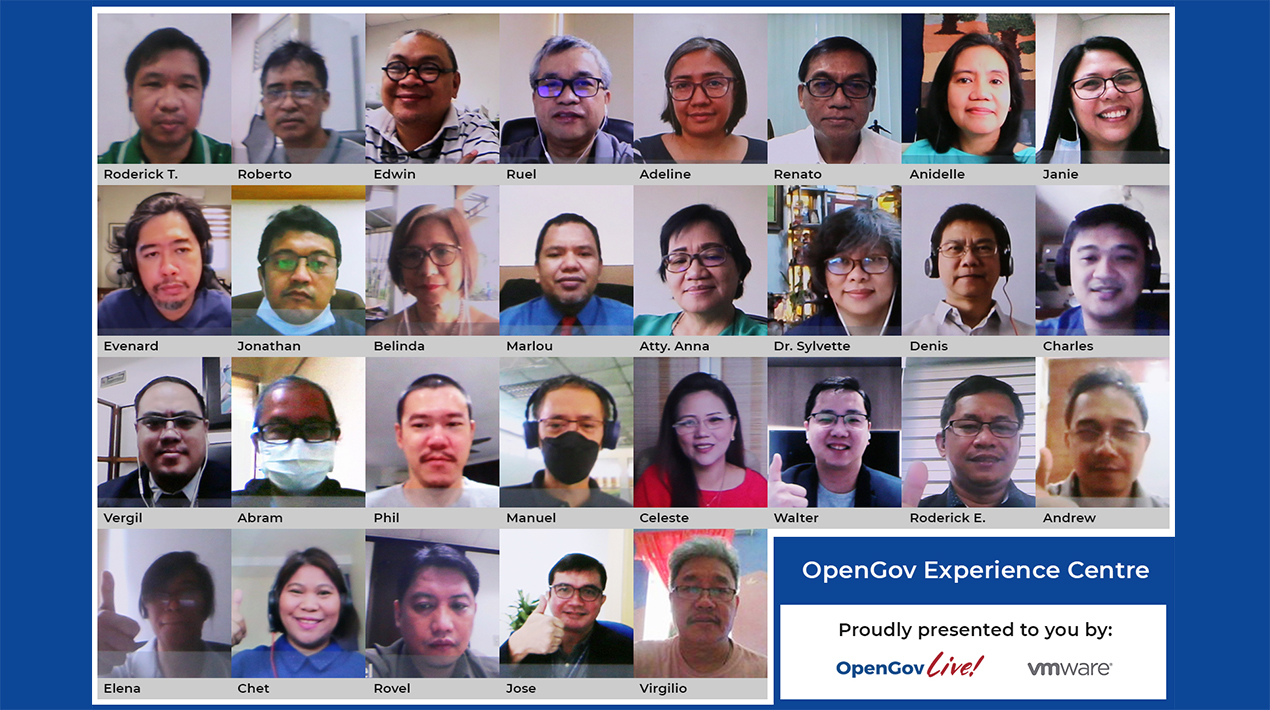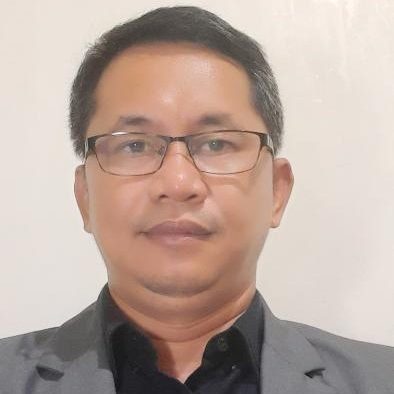
Around the world, government agencies are working hard to meet citizen needs and weather the impact of COVID-19. The new normal is driving the public sector to accelerate digital transformation initiatives to ensure that the citizens continue to avail themselves of government services uninterrupted and seamlessly.
While this transformation encompasses people, processes and solutions, it is the underlying technology that forms a foundation for a successful initiative. A big part of this shift is modernising the on-premises Information Technology environment and applications that span data centres, edge locations and public clouds.
In a fast-changing business environment, governments have seen first-hand the value technology brings to enable a connected and innovative ecosystem. While organisations in 2020 were focused on responding and adapting to the pandemic to ensure business continuity, 2021 marks a turning point with innovation becoming a priority for future-ready agencies looking to accelerate their growth.
The Philippines is progressing well on its path of digital transformation efforts and achieving a resilient, inclusive, and innovation-led economy.
Recognising the vital role of Information and Communications Technology in transitioning to the new normal amidst the ongoing pandemic, the Department of Information and Communications Technology (DICT) amended its Cloud First Policy to provide clearer instructions on policy coverage, data classification and data security, as well as its policy on sovereignty, residency and ownership.
Under the policy, cloud computing is acknowledged as the preferred technology for government administration and the delivery of government services. With the amended Cloud First Policy, the government is paving the way to an ICT policy environment that is more responsive to current needs and is expected to further enable government agencies to serve the public more efficiently.
However, this begs the question: How do organisations translate policies into practices on the ground?
This was the focal point of the OpenGovLive! Virtual Breakfast Insight held on 12 November 2021. This session aimed at imparting knowledge and strategies on how to unlock the multi-cloud future to accelerate digital transformation and deliver secured citizen-centric services with agility, scalability, and speed.
Staying ahead in the ‘cloud game’ of digital transformation

Mohit Sagar, Group Managing Director and Editor-in-Chief, OpenGov Asia, kicked off the session with his opening address.
Global mindsets and organisational culture have had a paradigm shift because of the pandemic and people are more inclined to continue to work remotely. In 2020-2021, a lot of technology was used to keep things functioning but these, he feels, were stop-gap measures – ‘band-aid’ solutions to keep organisations afloat.
With the world settling in on the new normal, there is a need to rethink and strategise for the long term. Citizens are becoming familiar with online digital services and “no citizen wants to wait in line again,” Mohit noted. In this scenario, cloud has become a critical component all over again. “Cloud is a requirement, not an option,” Mohit asserted.
Cloud technology is transforming businesses across industries and creating a dramatic shift by delivering hosted services through the internet with huge cost benefits and business innovation. It has changed the way data is accessed, stored, migrated, and managed. It offers high accessibility of information and enables the access of information remotely – a big plus in the context of the current global crisis.
Not to be left behind, the prevailing trend of governments is a shift towards a hybrid cloud strategy with the goal of increasing efficiency. Agencies are not only moving workloads between on-premise data centres and public cloud but are also making a change by uploading data instantly. With the transformation, agencies will have to juggle hundreds or even thousands of applications – all of which are critical to business.
Against this backdrop, how can agencies modernise, re-platform, re-host and re-factor applications – transition from monolithic systems to agile, streamlined microservices? The answers involve small, scalable steps.
Two of the most significant trends in legacy app modernisation are multi-cloud and hybrid cloud. Modernisation helps software teams optimise existing applications for these more distributed computing paradigms, rather than requiring them to rebuild their critical applications from scratch.
At the same time, navigating this shifting terrain must be done securely – there is a need to ‘bake’ security into the process and tools. This means that security is readily built into the infrastructure across workloads and applications. This is not an add-on product, tool, or bundle, but a concerted strategy for leveraging existing systems in new ways across applications, clouds, or devices. It is a unified approach to accelerate the identification, prevention, detection, and response to threats with the right context and insight.
Ultimately, Mohit is convinced of the flexibility that the cloud offers in responding to changes demanded by digital citizens. “No one wants to wait an hour for government services!”
Services are at the highest demand ever and while security is a concern, “it cannot be a handicap,” Mohit emphasised. More than ever, the ‘cloud game’ is one that agencies need to pay attention to. In this digital age, services need to be responsive and demonstrate agility, scalability, and speed even amid a pandemic.
The journey towards implementing cloud technologies

Walter So, Country Manager, VMware Philippines spoke next on how digital transformation can help organisations thrive in a post-crisis world.
Before moving to cloud, Walter explains that it is essential for delegates to understand the value their organisation wants to derive from cloud adoption. He highlighted the importance of having clarity on the Cloud value expectation. Some of the value expectations include:
Cost – Going to Cloud is cheaper because organisations no longer need an on-premise environment
Financial Flexibility – With the pay-as-you-grow model, companies shift from CAPEX to OPEX
Agility – Cloud can provide resources as and when organisations need them
Security and Resiliency – Being in a cloud environment provides organisations with better protection and availability because of the intrinsic technologies within
Managed Service – Organisations no longer need to manage infrastructures as cloud is provided as a service
While the journey began with the move to mono-cloud, the pandemic has accelerated the shift from mono-cloud to multi-cloud. This transition, however, from mono cloud to multi-cloud requires integration. This is where VMware can step in to assist, Walter opined.
The focus of the current phase hinges on running a more diverse set of apps in the cloud. Customers can select the cloud based on their needs and what their business demands. Data centres can also be transformed into private clouds where apps are run. The new digital architecture is a multi-cloud architecture.
For Walter, it is about having the right cloud for the right purpose, “Being cloud smart is to know that multi-cloud is an eventuality.”
Walter notes that with Edge, apps and services are pushed closer to the point of need, especially in sectors like retail, manufacturing, transportation, and energy. From his perspective, multi-cloud now extends from public clouds to private clouds to the Edge.
Observing that enterprise architecture and workloads are increasingly distributed, Walter makes the point that it is more complex to manage a multi-cloud environment:
- Enterprise architectures are far more distributed
- Workloads are more diverse; cloud-native, core enterprise, SaaS (Software as a Services) and are now apps at the Edge
- Businesses are running these workloads across different clouds, and each one has its own siloed set of tools and systems
- Managing, connecting, and securing all these apps is a challenge
- Developers tend to have a preferred cloud they are most comfortable using
- But getting code into production is painful and slow — even in one cloud, let alone across different clouds
- Customers and employees expecting instant access to all apps anytime from anywhere add to the mounting pressure.

For Walter, this is where VMware comes into the picture, providing the innovation of multiple clouds while having the simplicity of a single cloud. VMware can assist with a range of modernisation strategies:
- Retain – Maintaining and optimising app on-premise
- Rehost/migrate – Relocating existing apps to cloud
- Re-platform – Packaging existing apps into containers
- Refactor – Building new apps using cloud-native technology
- Retire – Phasing out traditional infrastructure and converting to SaaS
VMware unlocks the power of every cloud to unleash the full potential of existing applications and accelerates the creation and delivery of new ones. It offers consistent operations, simplifies management, and accelerates adoption – designed with multi-cloud in mind and optimised for every application. VMware’s cloud management spans across cloud environments and supports every possible app securely with confidence.
Walter concludes that the time is ripe for a shift from mono-cloud to multi-cloud. With VMware, organisations have the freedom to choose, an accelerated transformation, and application management.
Philippine government’s mandate of Cloud First Policy

The next speaker, Roderick B. Escolango, Government Digital Transformation Bureau, Department of Information & Communications Technology, explained the Cloud First Policy, related initiatives and how these support government transition to the new normal.
The Department of Information Communications Technology (DICT) is the primary government entity responsible for promoting ICT development, agenda and the use of merging ICT technologies to enhance national policies, programmes and services to improve the citizen experience with the government.
The DICT recognises the significant role of ICT in transforming to the new normal, easing the current conditions in data accessibility and service delivery.
The policy promotes the adoption of cloud computing as the preferred ICT deployment strategy for the government’s administrative use and delivery of online services. Cloud computing services provide better access to a global system of services and solutions and up-to-date digital innovations. The Cloud First Policy supports the optimal use of ICT for government transition to the new normal.
Moving to the cloud is expected to foster flexibility, security and cost-efficiency among users, he opines. It also offers accessibility to a global network of databases and innovations, alongside up-to-date security and more inclusive policies that fit the current demands.
Cloud Service Providers (CSPs) have specific classification categories to protect the data and construct well-informed judgments in terms of data access, storage, and transmission. Accredited CSPs manage data efficiently by abiding by international standards, qualifications and protocols in accepting and storing data as well as its migration to the cloud. With the following features, transparency, reliability and trust among the cloud service providers and the clients are fostered.
From the government standpoint, using cloud computing services encourage efficient inter-agency collaborations and citizen engagement. With systems and services accessed through the cloud, transaction processes are fast-tracked, and services are delivered in a shorter period.
Apart from the favourable stage, it sets in improving transactions, cloud computing services aid in reducing operational costs of building and maintaining physical infrastructures as well as decreasing the processes needed to be undertaken. Through this, cost-efficiency and convenience are achieved.

Introducing DICT’s GovCloud, Roderick explained that the joint project by ICT Office and Advanced Science and Technology Institute (DOST-ASTI) aims to provide cloud infrastructure access and services to government institutions. It offers a hybrid cloud infrastructure, which is composed of private on-premises and public cloud services through different service providers, such as AWS, Azure and Google.
It is a hybrid deployment of on-premise resources controlled and maintained by the DICT as well as resources from accredited Cloud Service Providers. The DICT manages and maintains the GovCloud to host several government systems to ensure that ICT infrastructures are efficiently working and free from cyber-attacks. Parallel to this, government agencies are allowed to activate, allocate and define capacity at their convenience.
The DICT GovCloud currently has 24 government agencies as tenants or clients. It offers a secured private cloud infrastructure that is developed and maintained following the client’s requirements and is encrypted with up-to-date security systems to avoid unauthorised access and data tampering.

The GovCloud allows easy upscaling or downscaling of ICT resources as deemed necessary to increase efficiency and runtime usage, and to accommodate the increasing number of users. It also provides vast data storage to support emerging resources and innovations.
Further, because of its on-demand accessibility, the clients and CSPs can provision, configure, and manage needed data conveniently and collaborate with minimal effort.
Roderick closed his presentation with the exhortation that government agencies, as well as private institutions, should adapt to continue providing commodities and services to the citizens and support their companies through revenues. Using ICT tools and platforms such as the cloud and cloud computing services will need to be maximised to address the current needs and demands of the clientele.
Interactive Discussion
After the informative presentations, delegates participated in interactive discussions facilitated by polling questions. This activity is designed to provide live-audience interaction, promote engagement, hear real-life experiences, and facilitate discussions that impart professional learning and development for participants.
The first question asked delegates what their top strategic IT priority over the next 12 months are. The delegates were equally split between the priorities of modernising their data centre,e.g., HCI,(27%) and moving to private/public cloud (27%). Similarly, the rest of the votes were also evenly divided between security and governance (23%) and application modernisation, e.g., Containers, Microservices, (23%).
A delegate felt that as organisations move into developing many applications there needs to be a consistent database that can be accessed by everyone. In response, Walter opined that cloud centralisation is the key that will lead to collaboration and data consistency.
Mohit posits that a hybrid cloud is not an option but a necessity. As more apps are deployed, organisations need to be cloud-native. The question of security is “not an inhibition but a conversation,” he emphasises. Regardless of the platform, organisations will have to continuously ensure that people are doing all the right checks and balances.
When asked about their current state of public cloud adoption, most of the delegates indicated that it is still under evaluation (41%). Other delegates either have some workloads in a public cloud (32%) or some workloads in multiple clouds (27%).
A delegate shared his experience of using multiple clouds. With the government requiring agencies to provide online capabilities for transactions, cloud offers flexibility because it frees operations from the binds of hardware infrastructures. Another delegate believes that while some data can be moved to a public cloud, some will remain on a private cloud.
Agreeing with that train of thought, Mohit emphasises that hybrid cloud adoption is a calculated decision and a strategy. “Governments need to learn to be fluid,” he asserts.
Concerning the driver for cloud adoption, the delegates were again split between the drivers of data centre extension/scaling capacity on-demand (39%) and migration of apps to cloud (39%). The remaining 22% chose disaster recovery as the main driver.
Mohit remarked that it is important to migrate to cloud especially for those working from home. It offers scalability and VMware can help agencies manoeuvre through that journey. With the platform, agencies will not be locked into particular cloud services which translate into agility and cost savings.
Polled on their key concerns when moving to the cloud, security and governance ranked the highest (44%). The rest of the votes were evenly distributed between the need to re-skill talent (28%) and operational costs (28%).
To flesh out the issue, Walter introduced the concept of risk-benefit ratio – to look at security vis-à-vis the benefits organisations are getting. “Is the security in our existing enterprise any better than what we will get into?” he asked. “Taking ownership of the risk matters.”
Mohit concurred that it is about understanding the risk-benefit when making decisions. It is also not a zero-sum game where you must put everything up – organisations can take small steps in a strategy-driven approach.
A delegate added that the idea that the public cloud is less secure could also be a matter of perception than reality.
On the topic of their ideal cloud environment, most delegates agreed that an ideal environment would allow them to migrate workloads to the cloud easily and seamlessly (44%). Others opted for keeping their apps secure (39%), enabling them to manage applications consistently (11%) or being able to move apps from cloud to cloud easily (6%).
About the current state of Kubernetes use within their organisations, 60% indicated they are using sandbox only while others were still evaluating it (26%). The remaining delegates either require more information (7%) or have limited use (7%).
In the final poll, most delegates see the lack of developer/operator skills as the top challenge for adopting Kubernetes (59%) while 23% said that they have security concerns. Of the rest of the delegates, 12% find the complexity of technology an issue, while 6% were unsure about the ease of managing Kubernetes.
Conclusion
Closing the session, Celeste Vicencio, Lead – Government, VMware Philippines, thanked everyone and expressed her gratitude for their insights, plans and contributions.
To cope with the rapid demands of a changing world, governments are making headway into technologies that can enable innovation and productivity for a distributed workforce and remote working.
Addressing the challenges of a distributed workforce requires a modern, integrated approach. Future-ready staff solutions must enable a seamless and more secure digital employee experience, driving greater outcomes in the new work environment. Celeste believes that a cloud operating model will be the backbone that facilitates such innovation and productivity for this employee base.
Celeste believes that a cloud operating model will be the backbone enabling innovation and productivity for a distributed workforce must be powered by. Staffed with a highly skilled team, the company will be able to assist delegates in exploring ways to provide exceptional citizen experiences, beginning with small steps.
Many customers began their journey by learning through VMware’s workshops or availing trials offered by VMware to test the migration of their legacy applications to a public cloud.
VMware is privileged to have been able to help government agencies stay resilient and serve citizens and they are committed to continuing to be available. Celeste encouraged the delegates to reach out to her and the team to explore ways VMware could assist them on their cloud journey and to have deeper conversations to make relevant recommendations.



















